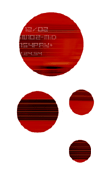

 |
 |
scientific program electroacoustic musics around set theory music analysis tools musicnetwork workshop professional week ircam forum workshops free software for music international multichannel sound forum performing arts and technologies dance and new technologies access to sound heritage thematic evenings demonstration stands artistic program set theory concert music in creation concert cursus concerts opera "one" sound installations open house weekend technologies gallery conferences demonstrations workshop-performances workshops and films ircam laboratories linux install-party concert distribution on internet associated events resonances night at glaz'art émilie simon at la cigale suguru goto reseaunances guided tours of ircam and the multimedia library resonances in pictures resonances 2002 
|
INSTRUMENT/COMPUTER INTERACTIONHistory and interests
Speaker : Jean-Claude Risset (composer) The computer first was used to compose, to produce the scores that next were played by the performers. To "sound", a portable has to command a sound machine, which could be, for example, a loudspeaker that is the most general sound source : direct computer synthesis offered new possibilities. But for only a short time it's working in real time and it's even working so quick that the result seems to be instant. When not being in real time, one has to operate as a director : one has to calculate the sound in advance, to record and to edit them. This is what's called tape music or music on support. It's always necessary to take care of the performance on stage of this kind of music and even to bring them alive by spatialization or by using real loudspeaker orchestras. Real time always fascinated musicians although, in the meantime, it also presents theoretical and practical problems. I will talk about the history of this process and various recent experiences of real time play by using traditional instruments thanks to score following or with the help of electro-mechanical devices capturing gesture or images. Those sensors can at will control different aspects of sound and music : the new digital stringed-instruments is potentially more diversified than acoustic or electronic stringed instruments. It can also be used for the creation of reactive sound installations. I will explain my work Duo pour un pianiste where the performer is accompanied by a computer that adds on the same acoustical piano (a Yamaha Disklavier), a supplementary part that depends - in different ways - of what the pianist plays and of the way he plays. This new process, which I started to work with in 1989 at the M.I.T., allows a "solo in duo" with an invisible, virtual, programmed but sensible partner. |
|||||||||||||||||||||||||||||||
 |
Organization Committee Copyright Ircam-Centre Pompidou 2003 |